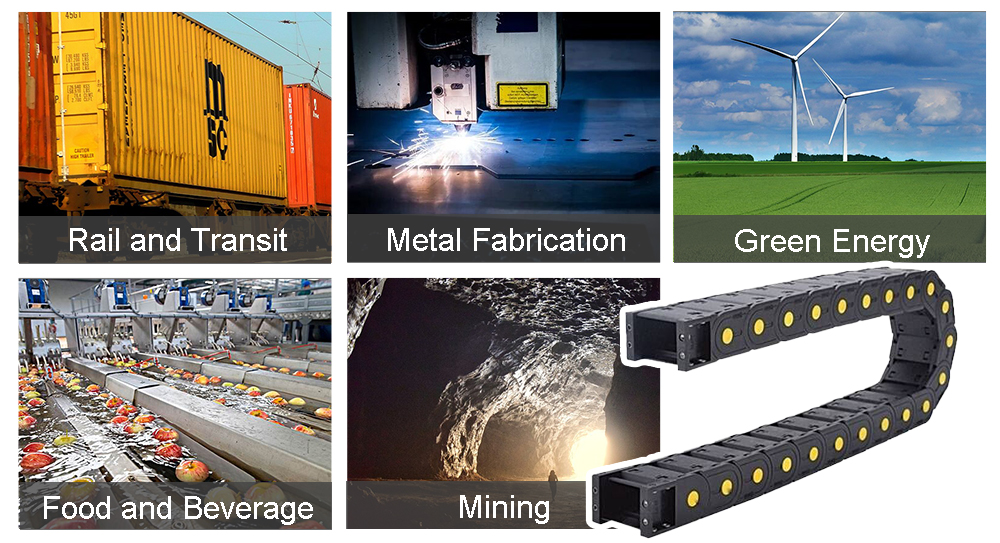What are the Applications of Drag Chain?
Thu, Nov 17 by ATO.com
Drag chain is a device that binds cable or wire or air compressor and oil compressor to facilitate its rotation and movement. It is a protective covering that secures cables or hoses to keep them separated and permit movement around automated machinery. Consequently, with numerous industries embracing automation, the need for these drag chains is essential. In this article, we will introduce the applications of drag chain.
Cable drag chains have applications across several sectors and in multiple types of machines within those industries. Some industries that have a use for hose or cable conduits. In the following, several application areas are described in detail.

- Rail and transit. Vehicle movers and car washes are some of the transportation industry applications for cable drag chains. These chains permit flexible or linear movement of the cables, even in applications that require heavy-duty use, such as moving extremely heavy vehicles.
- Robotics. Many robotics rely on power cables or hydraulics to power their components, which need to move smoothly with the machinery. Cable carriers provide this movement without damaging the integrity of the cables or the function of the robotic equipment.
- Food and beverage manufacturing. The food and beverage sector frequently uses automated equipment. Protecting the cables with tracks keeps the systems running at their peak while allowing for labor-saving automation. Furthermore, with some options that include magnetically detectable materials for the tracks or cleanroom materials, cable carriers can protect consumers from contamination.
- Marine and offshore operations. One example of marine or offshore operations of cable drag chain use is in port cranes. These machines require heavy-duty components that withstand the corrosion of salt spray and extended use. Additionally, these types of tracks may make the use of cables and hydraulic hoses on offshore oil rigs simpler by protecting these cables as they move with the equipment.
- Metal fabrication. Metal fabrication that uses machine tools requires cable tracks to protect the delicate electrical cables from damage caused by flying metal chips or extreme heat.
- Mining. Conveyors that use drag chains may help to transport coal from collection to discharge points. These types of conveyors can solve issues apparent in transporting coal via other methods. These types of conveyors help deliver coal to proper locations throughout coal-fired power plants to assist in energy production.
- Green energy. Renewable energy companies may use cable drag chains for the production and transmission of green power. For equipment that requires hydraulic hoses, the use of drag chains prevents the hoses from kinking, ensuring a constant flow of hydraulic liquid to avoid interruption of functioning.

